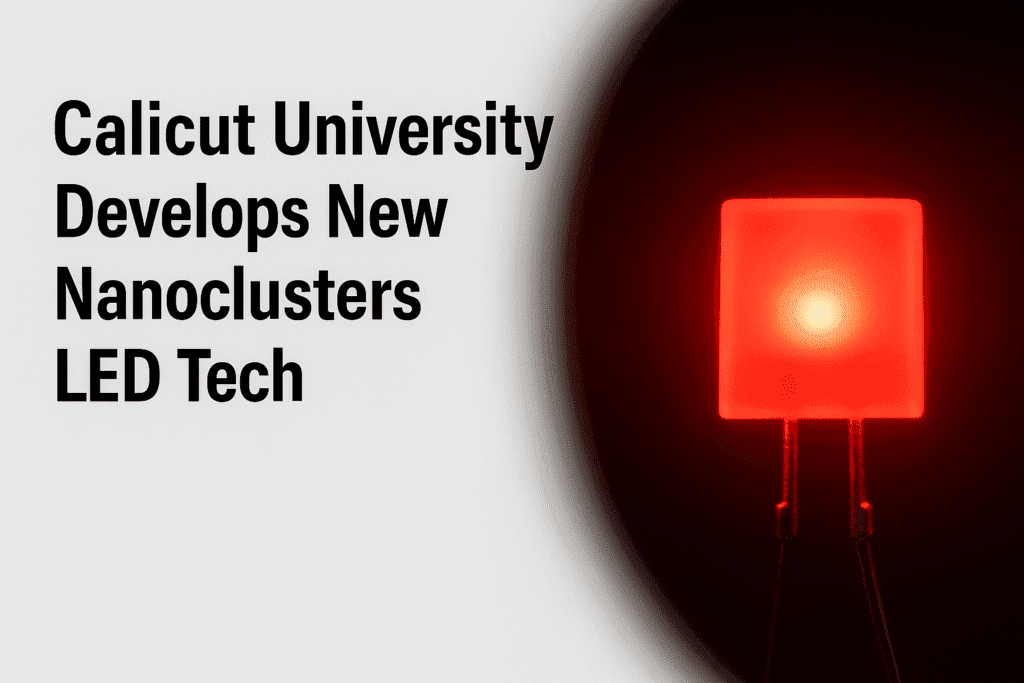
Calicut University has invented a new light-emitting diode (LED) using gold-copper alloy nanoclusters. This groundbreaking research, led by Dr. Shibu Siddharth and his PhD student Dr. Rival Jose from the Department of Nanoscience and Technology, has resulted in the development of a nanocluster-based LED (NC-LED) that delivers a saturated pure red emission with an external quantum efficiency (EQE) of 12.6% — the highest ever recorded in its category.
This remarkable discovery has been published in Advanced Materials (Wiley), a globally renowned journal in materials science with an impact factor of 27.4. It marks the first time a research article from Calicut University has been published in such a high-impact journal, significantly boosting the institution’s reputation in global scientific research.
The innovation is centered on atomically precise nanoclusters composed of a few metal atoms — specifically, a gold-copper (Au-Cu) alloy. Though invisible to the naked eye, these tiny clusters exhibit extraordinary photophysical properties such as intense light emission, high thermal and photostability, and strong environmental compatibility.
Unlike conventional LEDs, this new device does not rely on toxic or expensive materials. It has been fabricated using a simple, solution-processed, and environmentally friendly method — making it both sustainable and scalable.
Lead researcher Dr. Shibu Siddharth emphasized the dual significance of this work:
“Not only have we pushed the boundaries of nanocluster-based LED efficiency, but we have also demonstrated that high-impact innovations can emerge from Indian state universities. This is a proud moment for Calicut University and for India.”
Thanks For Reading, Please Give review In comments
